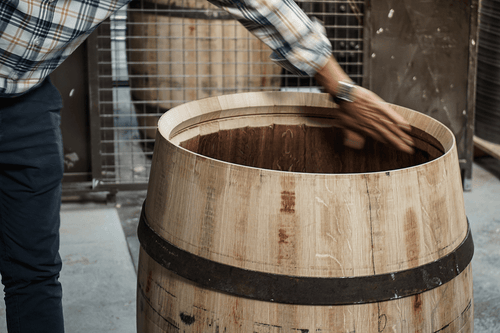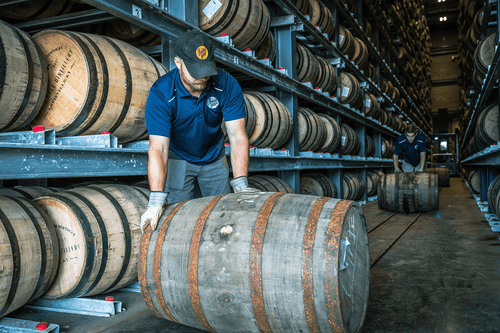Moonshine and White Dog: Is There A Difference?
MOONSHINE AND WHITE DOG
IS THERE A DIFFERENCE?
American craft whiskey is enjoying a giant leap in popularitymoonshine and white dog have also risen in popularity. As micro-distilleries popped up to produce craft whiskey, they also needed to make a profit in the interim. What better way than selling unaged whiskey that's grown in popularity? Two decades ago, you couldn't find white whiskey on any shelves. Today, it's present on nearly every liquor store shelf in America - known as moonshine and white dog...

The moonshine and white dog trend has expanded globally, going as far as Ireland. Even with the popularity of white whiskey gaining height, most casual bourbon and whiskey consumers and even some hardcore aficionados think of white whiskey with disdain and confusion.
What Is White Whiskey"
The confusion concerning white whiskey, moonshine and white dog comes in part from its novelty. Still, most of the issue stems from the lack of any actual definition of what white whiskey is. A generally accepted definition is that white whiskey is barely aged or not aged at all and comprises a mash bill that would eventually become rye, bourbon, or wheat whiskey had it appropriately been aged. Barely aged is relevant, as some do spend a bit of time in wood barrels but not enough to impart any color or flavor.
It's almost easier to explain what white whiskey isn't when it comes to spirits than to detail nuances between moonshine and white dog. Also, don't confuse white whiskey with grain vodka, which has been distilled to be nearly pure, so it has little or no integral flavor. It isn't exactly corn whiskey either, which is made of a minimum of 80% corn.
What Is White Dog?
You may have also heard the term "moonshine and white dog" when referring to white whiskey. It's just a term for raw, unaged whiskey distillate. If you see something labeled white dog on the shelf, it's undoubtedly been cut with water to tamper with the proof. It isn't technically "white dog," as that's what comes off the still, but distillers use the term as a marketing strategy, and it's still relatively accurate. The trend again originated with the influx of new craft distilleries that needed to turn a profit while their craft whiskey aged.
Also, most of these craft distillers would argue that white dog isn't white whiskey at all. Many believe that the term "white dog" is for unaged whiskey right off the still, fully intended to be aged appropriately for years. While this may sound insignificant, this detail makes a big difference in how drinkable it would be without being adequately aged. White dog, by this definition, was never meant to be consumed.
White whiskey, meant to be bottled and sold as moonshine or white dog, is made differently. Since it's intended to be enjoyed unaged, it's designed as such. Different yeast is used, and the process of distilling is different as well to create a white whiskey that's sweeter and softer than bourbon.
On the contrary, when preparing an actual white dog to be barreled and aged into whiskey, they skip that step, so the white dog is more full-bodied and rougher in order to handle the oak barrel well. In addition, the cuts for the barreled whiskey are much more aggressive than the white whiskey, which is more conservative.
Tasting White Dog and White Whiskey
When it comes to a white whiskey tasting, the purpose is to get down to its core. The point becomes even more distinct because what you're tasting is the infancy of a known whiskey. Conversely, when it comes to crafting white whiskeys, it isn't about examining the beginnings of a favorite whiskey but rather determining what grains and grain combinations work well together and what effect each grain has before time and oak transforms the juice.
Here's also where the differentiation between vodka and white whiskey comes in. While vodka is also made from grains, often the same grains as whiskey, the point of vodka is to create a pure spirit that has little taste of its own. White whiskey leaves impurities behind that give the floral and sweeter notes imparted by wheat, rye, or barley, as well as the fermented corn.
So, for a white whiskey to be good, it needs to have a good flavor but not a flavor that dominates in any particular fashion. Corn whiskey usually is very forward with the corn sweetness and corn husk grassiness. Meanwhile, white whiskey, which is more like unaged bourbon, should have more flavor elements, with less corn and other grains being introduced.
What Is the Difference Between Moonshine vs. White Whiskey?
There isn't any real difference between white whiskey and moonshine as far as its composure or taste. The only actual difference between white whiskey and moonshine is that genuine moonshine is made illegally, with no regulations, and no taxes have been paid.
The term moonshine makes people think of the backwood stills deep in the heart of the Appalachian Mountains, with grizzled adults in overalls and a hand-rolled cigarette poking through matted facial hair, distilling their homebrew. The moonshine you see on shelves at liquor stores today is really just white whiskey, (moonshine and white dog) using the term moonshine as a marketing gimmick to harken back to the days of old to spark nostalgia, so you'll buy their white whiskey.






















